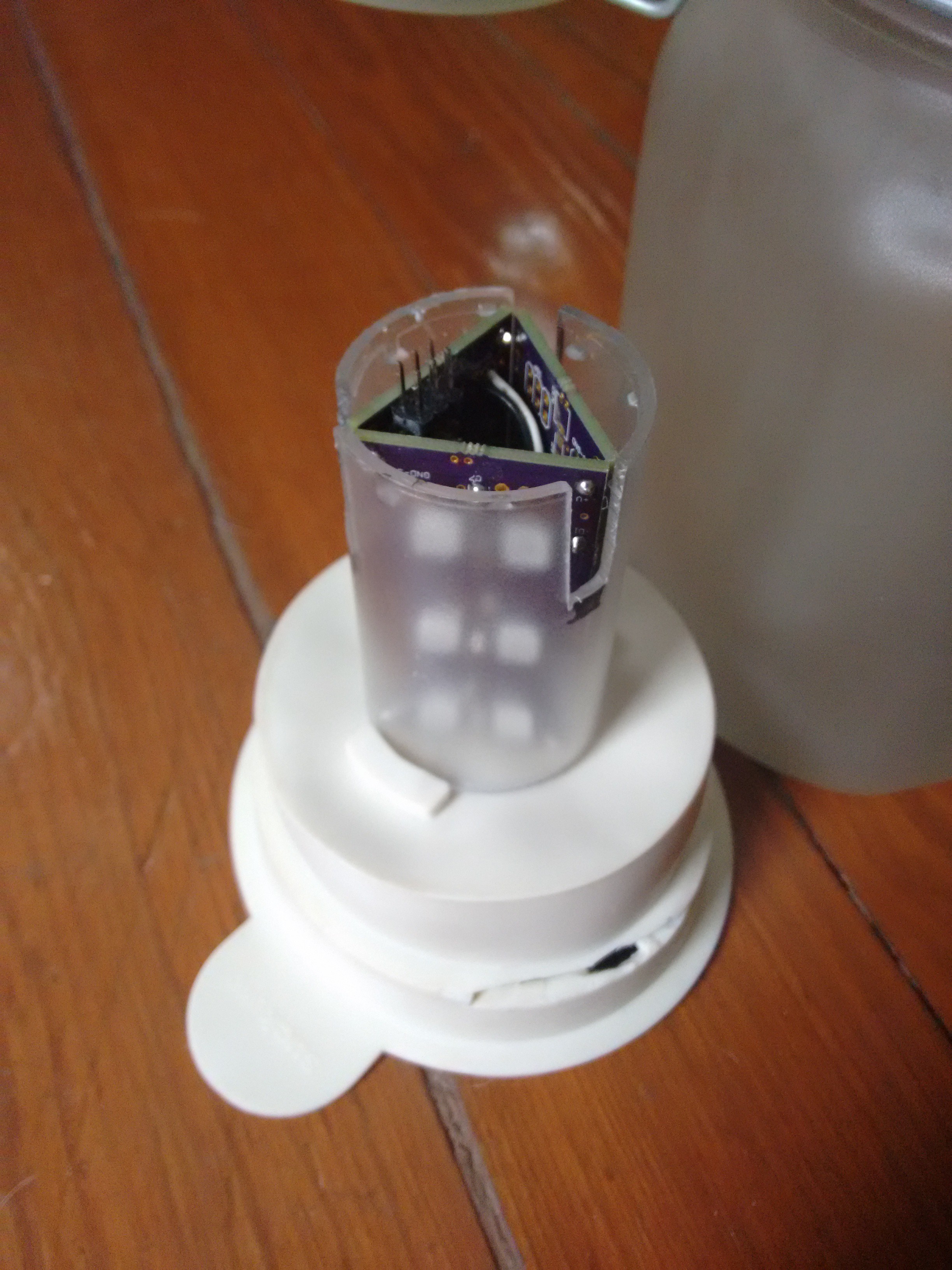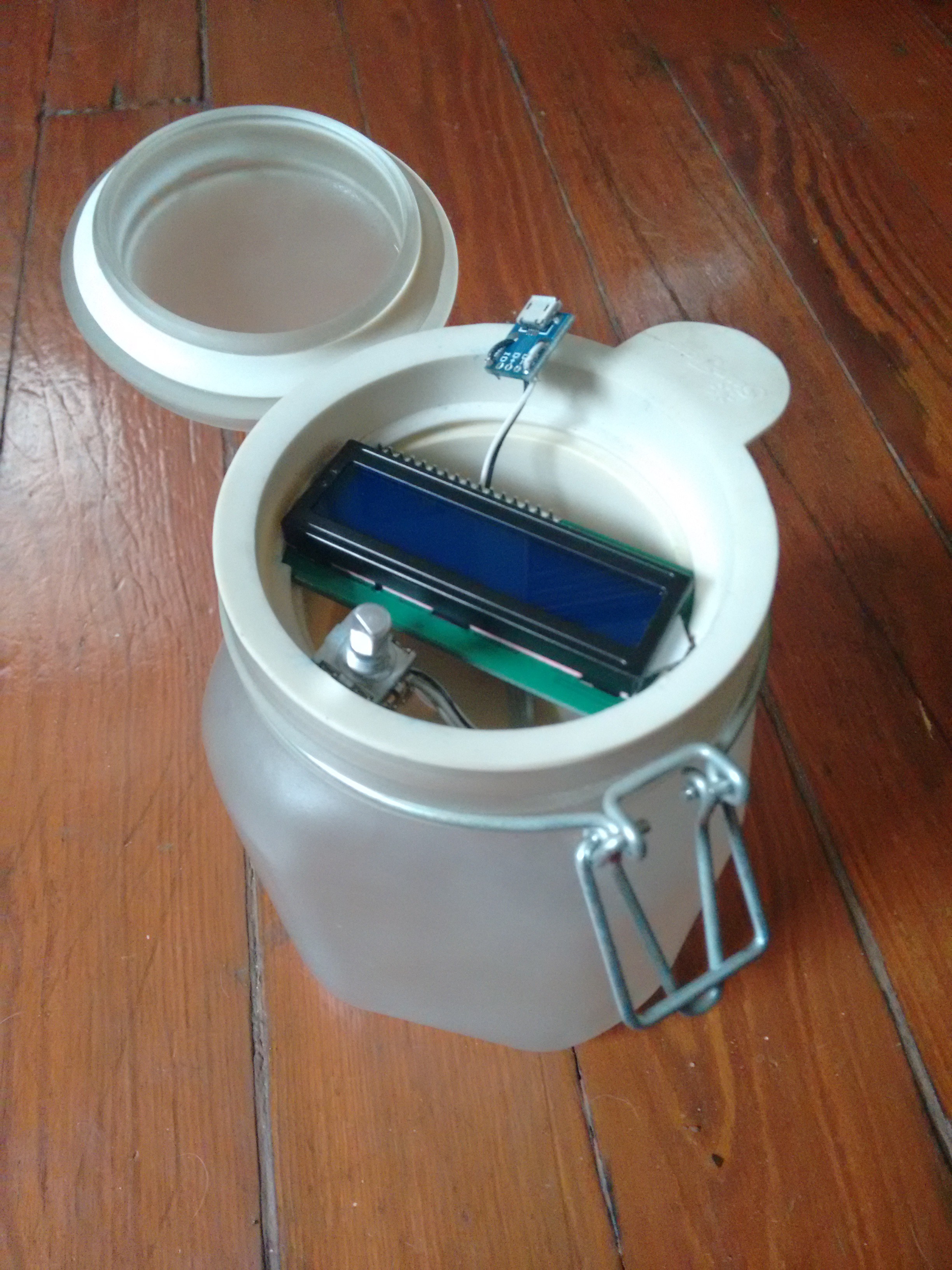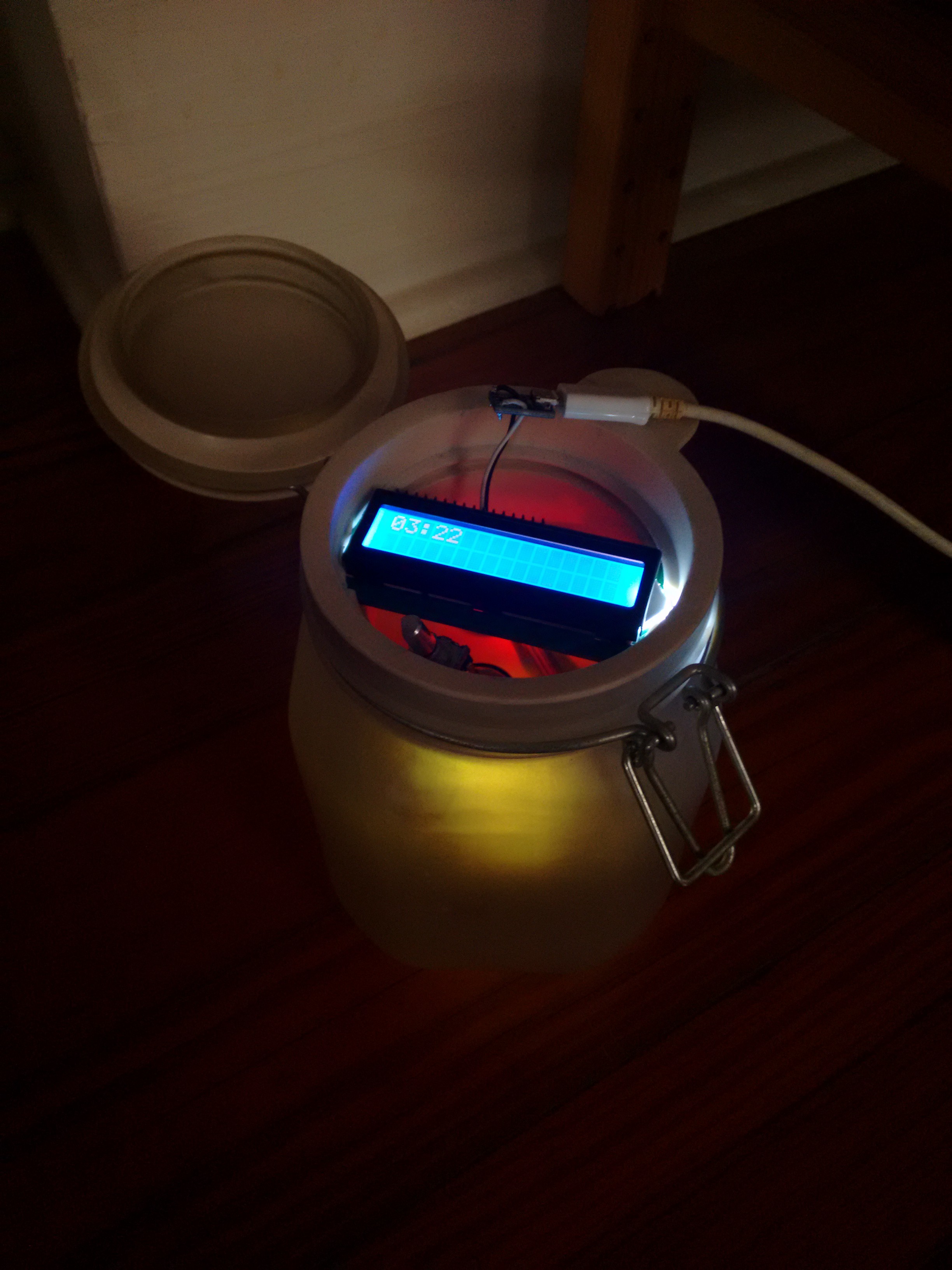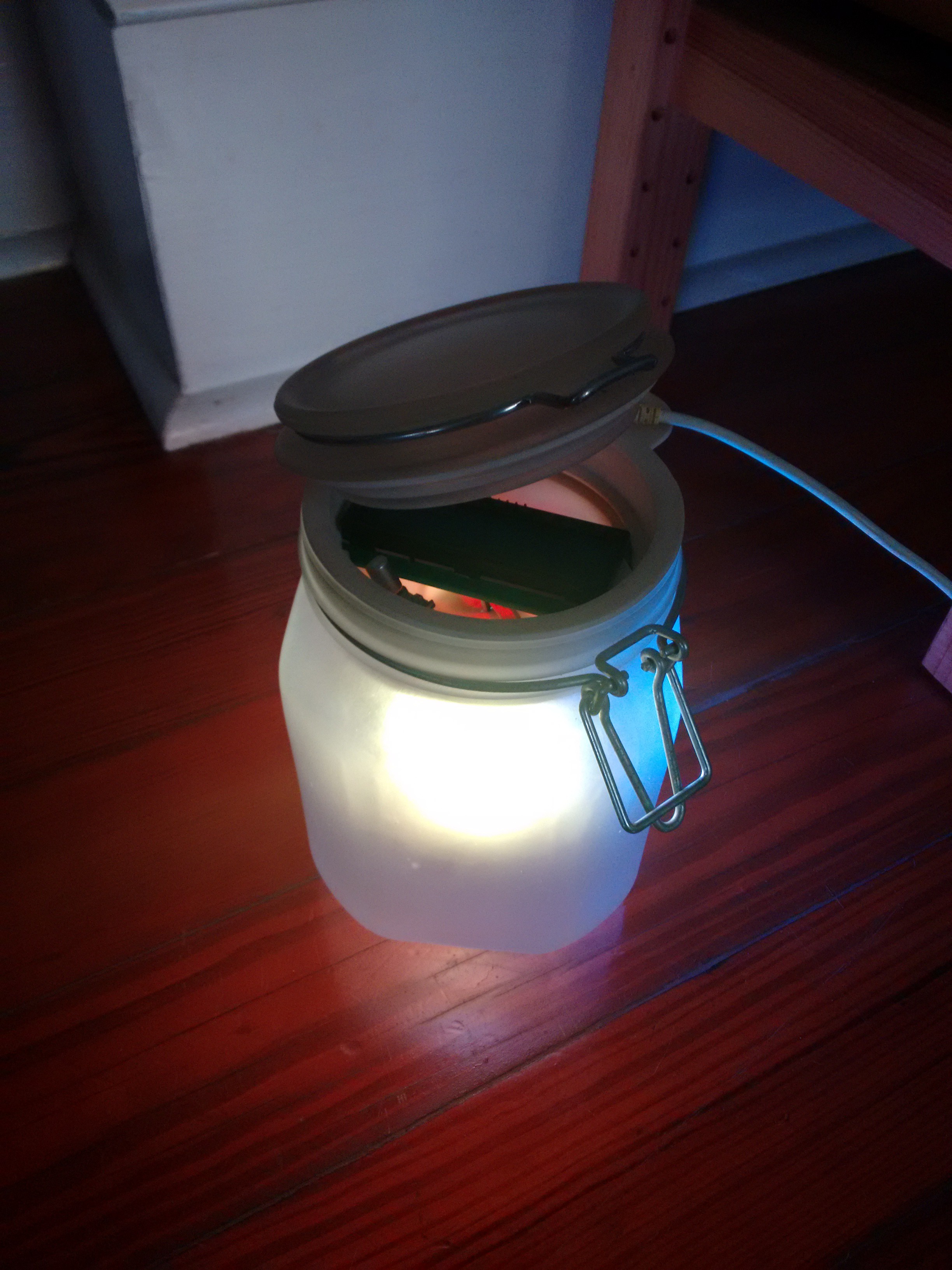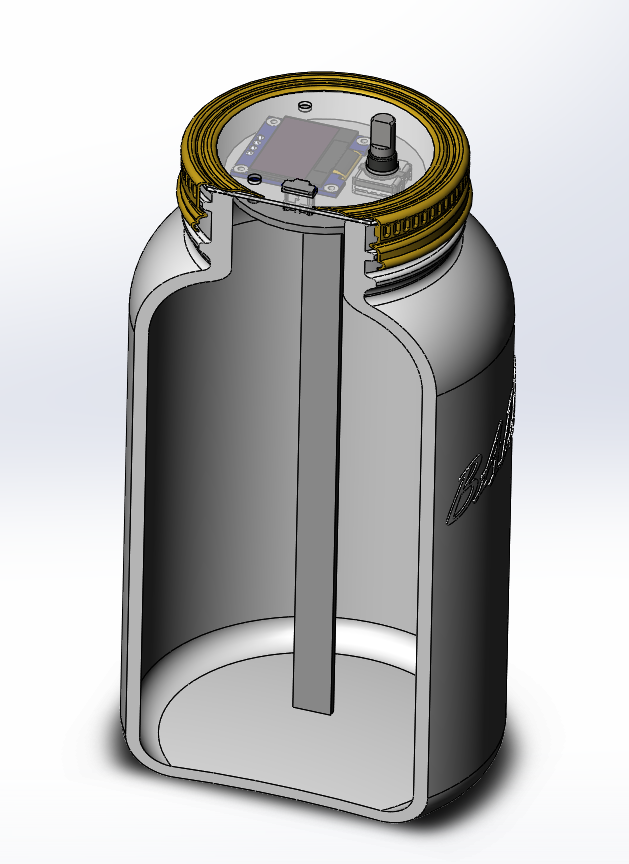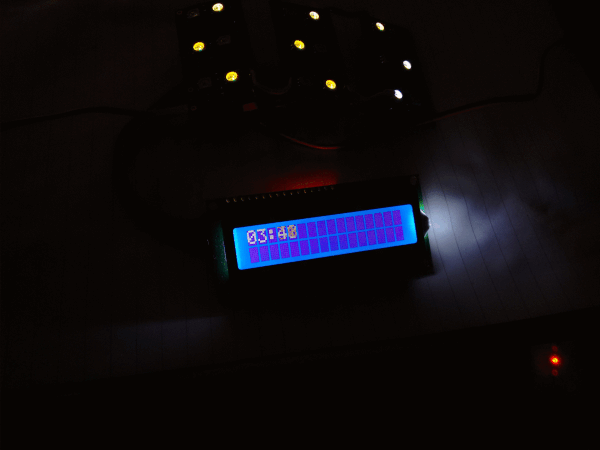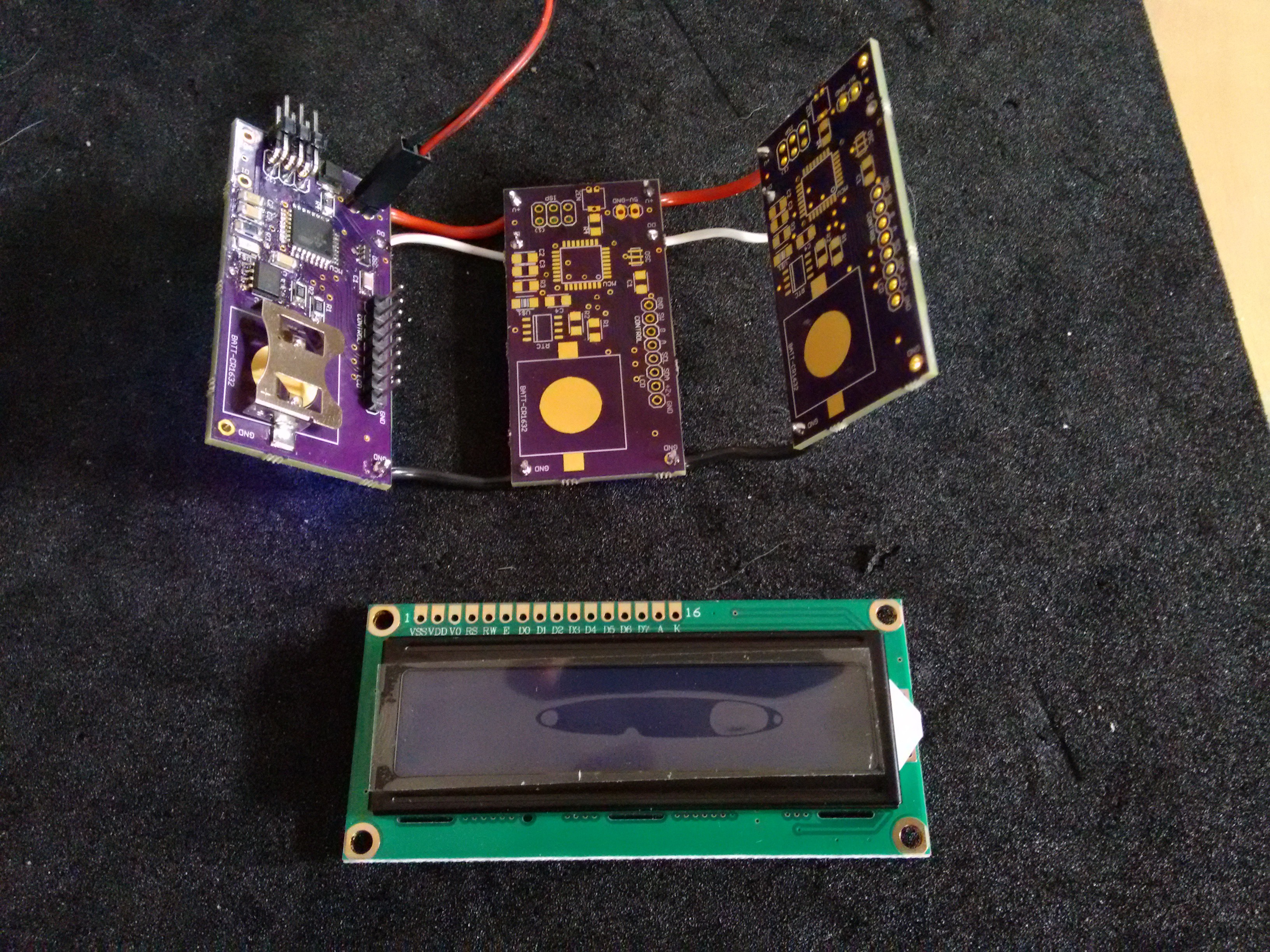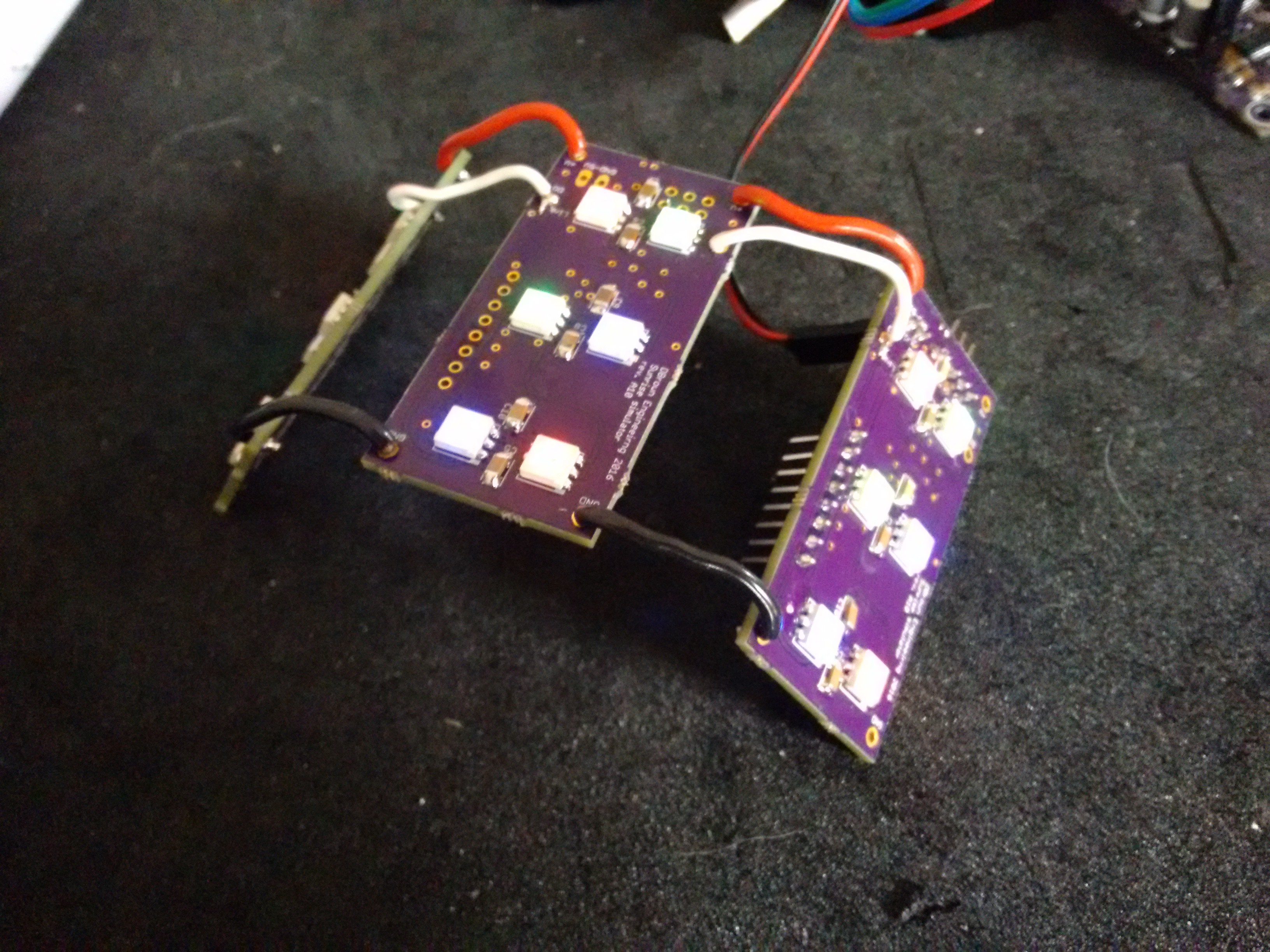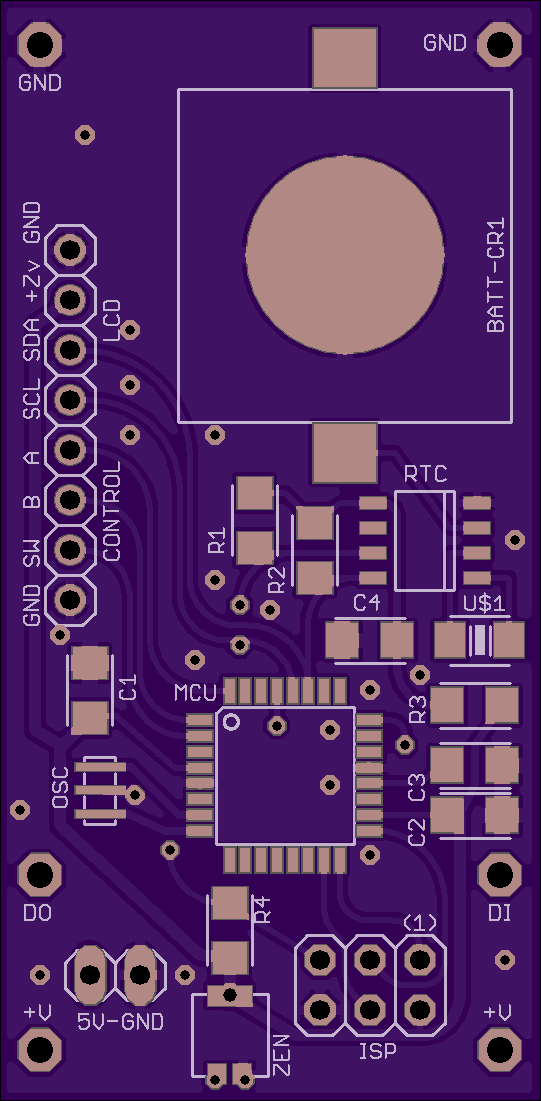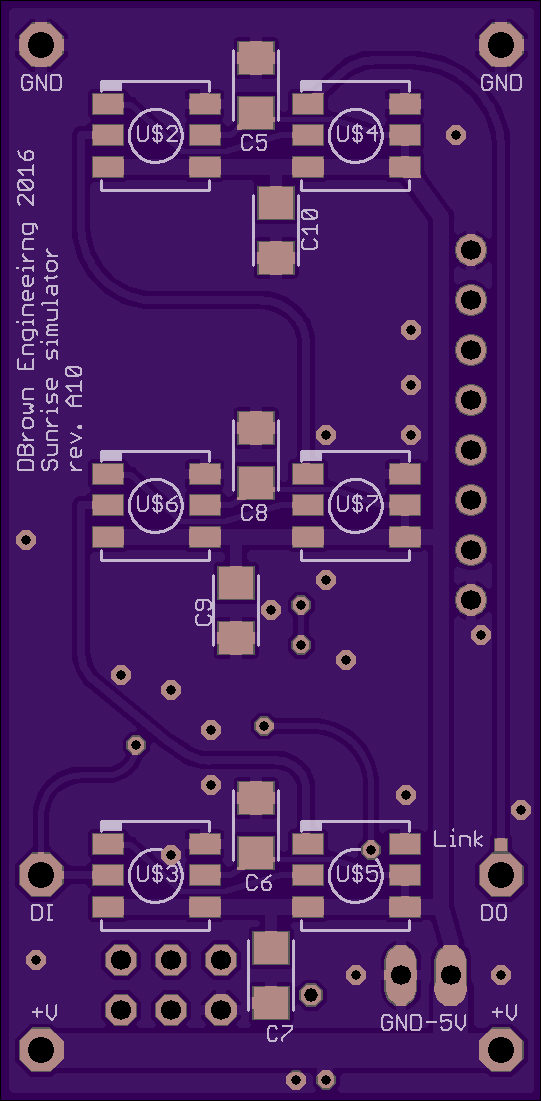-
Finished version 1
12/14/2016 at 17:42 • 1 commentAfter much pulling of hair I finally managed to get the WS2812s running using the core of code from Just In Time Project Pages on the atmega328PB using the on-chip 8MHz oscillator with external 37kHz clock crystal.
With this version up and running I packaged it up in the spare sun-in-a-jar jar. I still need to drill a hole in the lid for the micro-usb socket, but that will have to wait till January.
![]()
The three boards soldered together and fitted into the housing (cut-outs needed because the tube is tapered)
![]()
Not particularly well finished
![]()
early (low light)
![]()
later (brighter, colours do not show up well in this)
-
The jar form factor
11/23/2016 at 20:43 • 0 commentsAfter some playing with fitting the prototype into various containers to provide suitable light diffusion and deciding the re-purpose a sun-in-a-jar which has the requisite frosted surface I looked online for a source of frosted jars / containers.
It seems that the best source is the aforementioned sun-in-a-jar, but another option presented itself in the form of frosted glass spray.
Some more mulling later and the Ball brand mason jars (screw lids with separate top disc) could provide a low cost ubiquitous housing.
I did a layout in eagle to make a disc PCB to fit the control screen, encoder and processor into a 5cm x 5cm area.
After pulling together some models off grabcad I came up with the following design;
I need to get the prototype working with the new screen and still to get the ATMega asynchronous clock working using a watch crystal, but it looks like should be possible to put together a pretty polished version at the end of it.
-
Ditch the discrete RTC
11/17/2016 at 23:01 • 0 commentsGiven that the having a high accuracy clock is not strictly required for this application, and that i've been having issues with the clock corrupting from the voltage spike of switching on/off i've decided to remove the RTC and associated components and move the crystal over to the ATMega to have that run the time keeping itself.
I found an atmel application note for RTC using the asynchronous timers [Ref. http://www.atmel.com/images/Atmel-1259-Real-Time-Clock-RTC-Using-the-Asynchronous-Timer_AP-Note_AVR134.pdf]
This also brings the total cost down for the control components by about a third.
-
Working prototype
11/08/2016 at 21:24 • 0 commentsWell, i've got the code running (finally) after building the various modules and figuring out the WS2812 module, in Atmel studio 7. The PCB needed a little re-design as I had the RTC chip pins in the wrong order.
The corrected PCB design has been uploaded (rev A11)
Below is a short animation of the test cycle the dawn / sunset cycle.
![]()
You can see the three panels (x2 sun facing, x1 opposite horizon) with the three azimuths (the highest are similar for all three panels).
The idea is for the panels to be folded into a triangle and placed inside a frosted housing to help diffuse the light. Some more work could be done on the luminosity calculations to get a better dawn / sunset progression through the range of azimuths.
-
Prototype assembled
10/18/2016 at 21:19 • 0 commentsI've soldered up and tested the LED arrangement for the light, which is working as expected.
Single board populated with control components, all three populated with LEDs and connected with power, ground and data wires, will be arranged as a triangle of the three boards.
I still need to program the MCU and convert my formulli into code
![]()
Figure: Control side & LCD
![]()
Figure: LED side lit with test pattern
-
Ready for prototyping
10/06/2016 at 20:46 • 0 commentsThis one is now ready to be sent off to be fabricated. The layout could probably be improved, but its tricky working around the fixed layout for the LEDs so that the boards are able to be daisy chained together.
The big square is for a battery holder for the RTC backup battery
I'll be reusing/re-writing my code from a few years ago, and aiming to have the maths for the geometry of the sun relative to the chosen Long/Lat and time of year. In order to generate a accurate rendition of the pre-dawn and then dawn light, using a generic atmosphere / cloud cover / height for calculating colour and diffusion.
![]()
![]()
 David Brown
David Brown